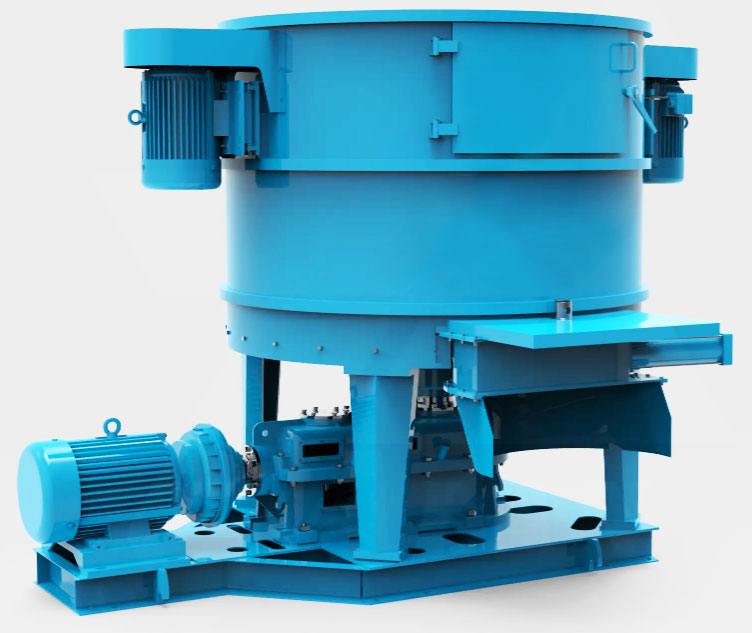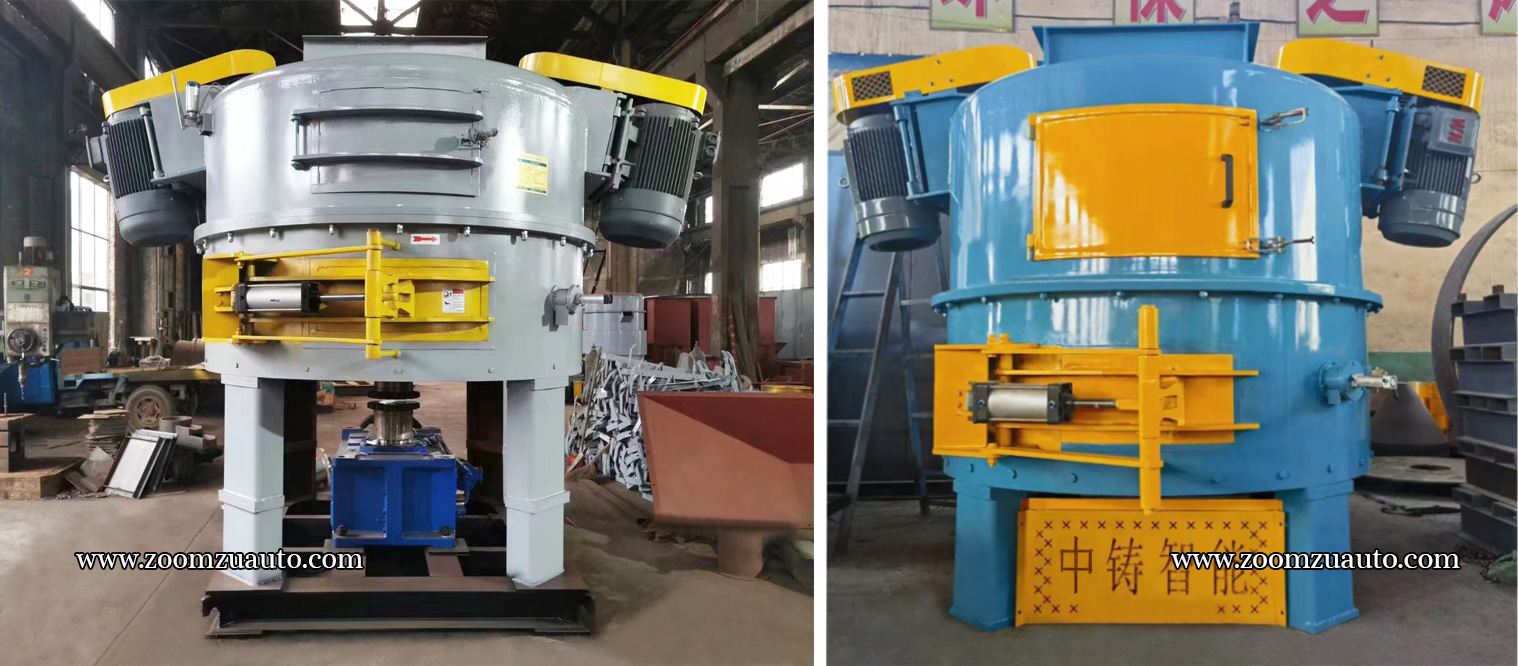-

-
Guangzhou Zhongzhu Machinery Co. LtdSand casting molding machine manufacturer
-
008613926238353 WhatsApp:
-
E-mail: 470199755@qq.com


This equipment is mainly used for the mixing and stirring of molding sand in the casting workshop. A certain proportion of coal powder, bentonite, and water are added to the original or old casting sand. After high-speed rotation and stirring of the equipment, casting molding sand with a certain strength and humidity is obtained, providing a complete mixing of casting molding sand for automated molding machines within a certain time period and molding cycle.
1. Large mixing capacity, strong mixing ability, high mixing efficiency, and good molding sand performance;
2. The design of the side discharge door makes it more flexible and convenient to use. The electrical automation controls the opening and closing of the material gate, and the discharge is fast, fast, and clean;
3. The chassis is paved with alumina ceramics, and the inner wall is lined with wear-resistant parts to improve the smoothness of the interior and avoid sand sticking on the inner wall. The replacement of wear-resistant parts is convenient and fast, and the service life is increased;
4. Scraper and agitator rotor blades are welded with alloy blade tips to improve hardness and wear resistance, and blade replacement is fast and cost-effective;
5. The mixer is precisely matched with the chassis and disc wall, achieving minimal wear and tear;
6. Equipped with quantitative and weighing devices to accurately ensure the required composition and moisture ratio of molding sand;
7. High operational safety; Good working environment, sealed and dustproof, with no ash loss;
8. Setting up maintenance doors around provides a large maintenance space, making the replacement and maintenance of wear-resistant parts convenient and fast, and also more conducive to regularly cleaning the interior of the machine basin;

The sand mixer is an indispensable unit equipment in the casting sand treatment system, and its structural design is constantly improving and innovating with the actual production needs. The different requirements for the mixing efficiency of casting sand have evolved into various different structures of sand mixers. Nowadays, the most widely used and advanced high-speed rotor sand mixer in automated casting production lines is the one with the most advanced performance.

The high-speed rotor sand mixer consists of: driving device, base, casing, side discharge door and maintenance door, double S-shaped mixer, rotor mixer, dust cover, automatic quantitative water adding device, weighing hopper, auxiliary material weighing device, sand detection gate, fully automatic electrical control system, etc;


Two sets of rotor mechanisms are symmetrically installed on the enclosure and are directly driven by electric motors via V-belts. Two inspection doors are installed at the symmetrical position of the upper enclosure to facilitate inspection, maintenance, and cleaning of the sand sticking in the mixing machine basin. Each inspection door is equipped with a limit switch. When the inspection door is opened, the power to the mixing machine is automatically cut off, and the machine cannot be started to ensure the safety of personnel inside the machine.
The raw materials are intermittently and in batches added to the sand mixer through the weighing device. At the same time, the mixer rotates continuously and evenly sprays water into the sand mixer. The large double S-shaped agitator at the bottom and the high-speed rotor extending downwards from the cover rotate in opposite directions, while the sand mixer chassis and guide plate remain stationary. This combination of motion and stillness ensures that the molding sand is quickly and strongly mixed and rolled to achieve a high degree of uniformity. All particles in the mixture are moving up, down, and horizontally, constantly being mixed and loosened.

In the vast majority of advanced casting enterprises, the high-speed rotor sand mixer equipped on automated clay sand treatment production lines is mainly divided into two types: conventional high-speed fixed rotor sand mixer and high-speed planetary rotor sand mixer. Conventional high-speed fixed rotor sand mixer is mainly used to match the 20T-60T clay sand treatment production line, The high-speed planetary rotor sand mixer is mainly used in the 70T-200T clay sand treatment production line. The biggest difference between the two lies in the number of internal high-speed rotor mixing shafts and the mixing method during sand mixing;
The high-speed planetary rotor sand mixer is equipped with four rotor type mixing shafts with different shapes. During the mixing process, the vortices formed by mixing sand with different shapes of rotors are also different. At the same time, the four mixing shaft rotors rotate around the center point of the mixer, making a motion trajectory similar to a planetary orbit. Therefore, the mixing shaft rotors can mix sand without obstacles or dead corners inside the entire sand mixer. The speed of the rotor rotating on each mixing shaft can also be independently set, with two forms of constant speed and variable speed. The purpose is to make different shaped rotor mixing shafts more flexible to be used together, and to complete a cycle of sand mixing more quickly and uniformly in a short period of time. In terms of energy consumption, we have adopted a variable frequency design for the high-speed planetary rotor sand mixer, equipped with sand compactness and composition ratio detection devices, visual monitoring functions during operation, and automatic oil injection devices. Overall, it can be understood that the high-speed planetary rotor sand mixer is a more automated, intelligent, and efficient high-speed rotor sand mixer.